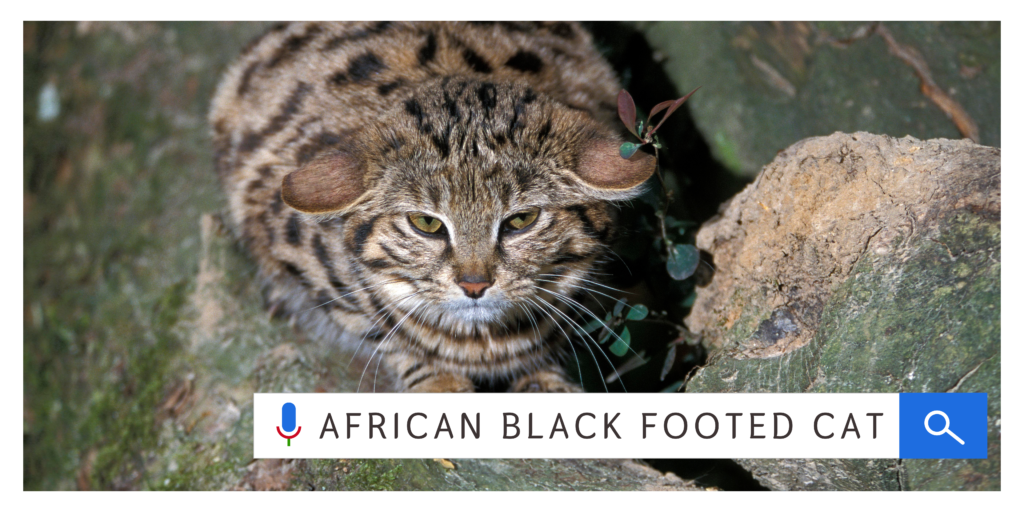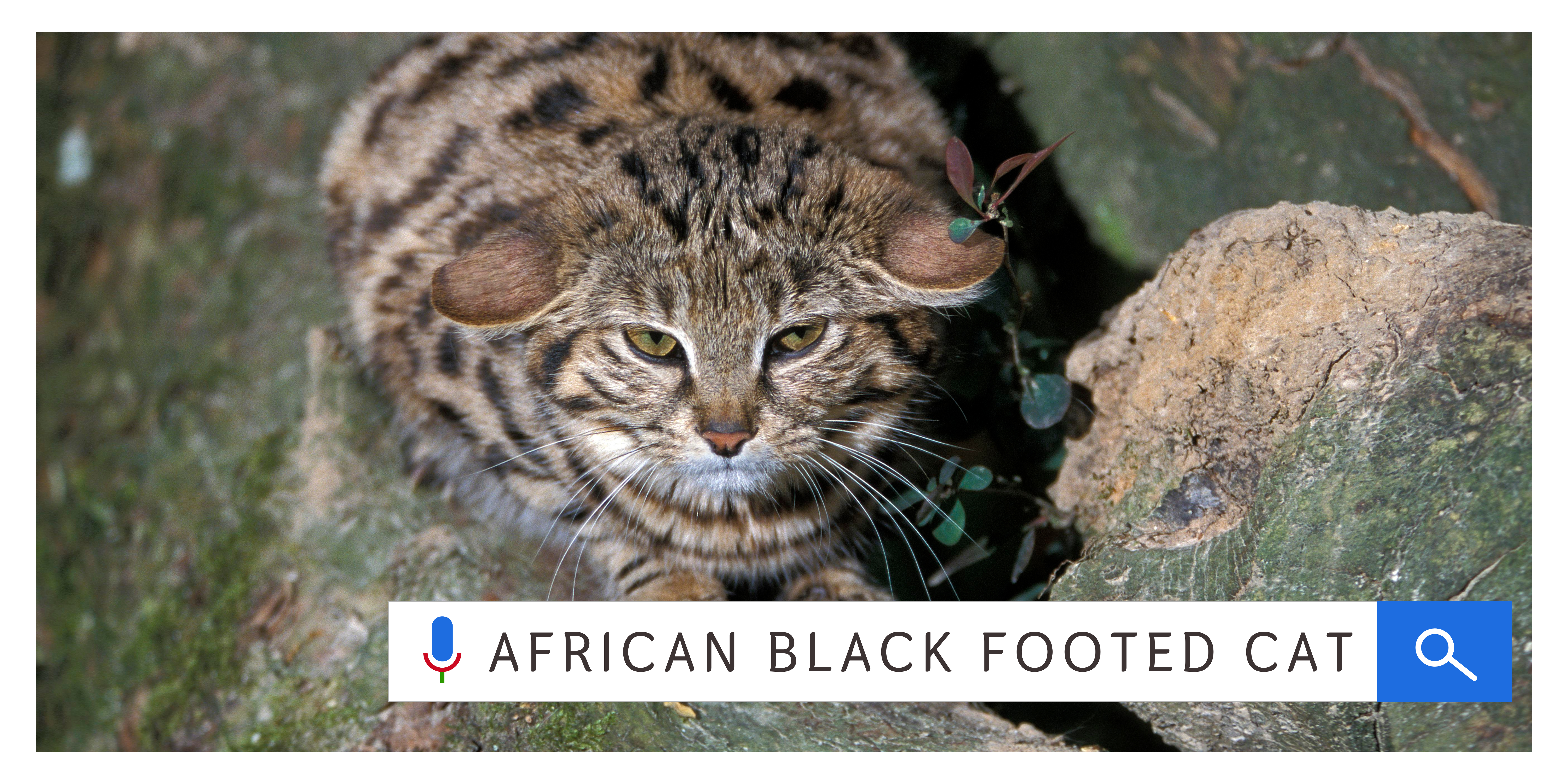Felis nigripes, the formal name for the black-footed cat, is an amazing species of cat that is indigenous to the dry and semi-arid regions of southern Africa. This elusive cat, which is sometimes disregarded because of its small size, has a reputation for being a fierce hunter with a remarkable success rate in catching prey.

Table of Contents
ToggleNatural Habitat of Black Footed Cat
Black-footed cats live in grasslands, savannas, and scrublands and are mostly found in South Africa, Namibia, and Botswana. They have evolved unusual hunting strategies and a nocturnal lifestyle to survive in these hostile conditions and to avoid the heat of the day.
Physical Features of Black Footed Cat & its Uniqueness:
| Feature | African Black-footed Cat | Other Cats |
|---|---|---|
| Deadliness | The African black-footed cat is believed to be the world’s deadliest cat, with a kill rate of 60%. | Other wild cats often spotted on your African safari, such as lions and leopards, rarely succeed more than 20-40% of the time. |
| Size | The African black-footed cat is the smallest wild cat in Africa, having a head-and-body length of 35–52 cm (14–20 in). | Other wild cats are larger than the African black-footed cat. For example, the lion has a head-and-body length of 170–250 cm (67–98 in). |
| Hunting | The African black-footed cat is an opportunistic hunter that takes anything it can overpower. Males can even take down hares or small bustards. | Other wild cats have specific hunting techniques. For example, cheetahs are known for their speed and agility, while lions hunt in groups. |
| Vision | The African black-footed cat’s vision is six times better than that of humans, aided by enormous eyes. It’s also equipped with excellent night vision and impeccable hearing that can pick up even the tiniest sound – which is why they are easily disturbed and tricky to spot when on safari. | Other wild cats have different visual and auditory capabilities. For example, the lion’s eyesight is six times better than that of humans, and they have excellent night vision. |
| Skin | The African black-footed cat has pink skin, which is different from other wild cats, whose skin is usually dark tan to black. | Other wild cats have different skin colors. For example, the lion’s skin is usually dark tan to black. |
The unique features of the African black-footed cat help them in the following ways:
- Deadliness: The African black-footed cat’s high kill rate helps it survive in the wild by providing a reliable source of food.
- Size: The African black-footed cat’s small size allows it to move quickly and quietly, making it easier to catch prey and avoid predators.
- Hunting: The African black-footed cat’s opportunistic hunting style allows it to take advantage of a wide range of prey, increasing its chances of survival.
- Vision: The African black-footed cat’s excellent vision and hearing help it detect prey and avoid predators, making it a formidable hunter.
- Skin: The African black-footed cat’s pink skin may help it regulate body temperature in hot environments.
Hunting Behavior of Black Footed Cat
Black-footed cats have an incredible success rate of 60–70% in capturing their prey, making them the real hunters. They eat a wide variety of foods, from insects to small mammals like rodents and birds. They are effective hunters due to their sharp senses, speed, and agility; they have even been seen to catch many prey items in one night.The African black-footed cat’s hunting technique is different from other large cat species. It employs a stalk-and-pounce method, using its excellent agility and lightning-fast reflexes to catch its prey.
Stalk-and-pounce hunting method:
The stalk-and-pounce method is a hunting technique used by many cats, including the African black-footed cat. It involves the following steps:
- The cat spots its prey and begins to stalk it, moving slowly and quietly to avoid detection.
- Once the cat is close enough to its prey, it pounces on it with lightning-fast reflexes, using its powerful hind legs to propel itself forward and its sharp claws to grab onto the prey.
- The cat then delivers a swift bite to the neck or head of the prey, killing it instantly.
This technique is different from other hunting techniques used by cats such as the fast hunt and the sit-and-wait hunt. The African black-footed cat, for example, uses all three techniques depending on the situation. The stalk-and-pounce method is particularly effective for small cats like the African black-footed cat, which rely on their agility and speed to catch prey.

Lifestyle & Diet of Black Footed Cat:
Lifestyle: The African black-footed cat is a nocturnal animal, meaning it is active during the night and sleeps during the day. It spends the day resting in hollow termite mounds and dense cover in unoccupied burrows of South African springhare, aardvark, or porcupine. The African black-footed cat is known to be primarily terrestrial and solitary, except when females care for dependent kittens.
Diet: The African black-footed cat is a carnivore and feeds mainly on mice, small lizards, insects, and birds 1. They have adapted well to their habitat and hardly ever need to drink water. The African black-footed cat is known to be an opportunistic hunter that takes anything it can overpower . It employs three hunting strategies: the slow hunt, the fast hunt, and the sit-and-wait hunt.
Can you Own/Buy Black Footed Cat?
The African black-footed cat is a wild cat that is endemic to Southern Africa. It is not legal to own an African black-footed cat as a pet in most countries, including the United States. The African black-footed cat is listed as a vulnerable species on the International Union for Conservation of Nature (IUCN) Red List of Threatened Species.
However, you can still support the conservation of African black-footed cats by symbolically adopting one through the World Wildlife Fund (WWF). The WWF offers a black-footed cat adoption kit that includes a plush toy, adoption certificate, and photo and fact card. The donation helps support WWF’s global conservation efforts to save endangered wildlife, protect fragile ecosystems, and build a future where people live in harmony with nature.
Summary of African Black Footed Cat:
| Feature | Description |
|---|---|
| Scientific Name | Felis nigripes |
| Size | The African black-footed cat is the smallest wild cat in Africa, having a head-and-body length of 35–52 cm (14–20 in). |
| Habitat | The African black-footed cat is endemic to the arid steppes and grassland savannas of Southern Africa. |
| Behavior | The African black-footed cat is primarily terrestrial and solitary, except when females care for dependent kittens. It is a nocturnal animal, meaning it is active during the night and sleeps during the day. It spends the day resting in hollow termite mounds and dense cover in unoccupied burrows of South African springhare, aardvark, or porcupine. |
| Hunting | The African black-footed cat is an opportunistic hunter that takes anything it can overpower. It employs three hunting strategies: the slow hunt, the fast hunt, and the sit-and-wait hunt. It is often observed crouching low to the ground, tracking its prey with intense focus before launching a rapid and accurate pounce. |
| Vision | The African black-footed cat’s vision is six times better than that of humans, aided by enormous eyes. It’s also equipped with excellent night vision and impeccable hearing that can pick up even the tiniest sound – which is why they are easily disturbed and tricky to spot when on safari. |
| Skin | The African black-footed cat has pink skin, which is different from other wild cats, whose skin is usually dark tan to black. |

